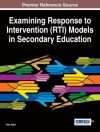Value-added methods refer to efforts to estimate the relative contributions of specific teachers, schools, or programs to student test performance. In recent years, these methods have attracted considerable attention because of their potential applicability for educational accountability, teacher pay-for-performance systems, school and teacher improvement, program evaluation, and research. Value-added methods involve complex statistical models applied to test data of varying quality. Accordingly, there are many technical challenges to ascertaining the degree to which the output of these models provides the desired estimates. Despite a substantial amount of research over the last decade and a half, overcoming these challenges has proven to be very difficult, and many questions remain unansweredat a time when there is strong interest in implementing value-added models in a variety of settings. The National Research Council and the National Academy of Education held a workshop, summarized in this volume, to help identify areas of emerging consensus and areas of disagreement regarding appropriate uses of value-added methods, in an effort to provide research-based guidance to policy makers who are facing decisions about whether to proceed in this direction.
Center for Education & Division of Behavioral and Social Sciences and Education
Getting Value Out of Value-Added [PDF ebook]
Report of a Workshop
Getting Value Out of Value-Added [PDF ebook]
Report of a Workshop
ซื้อ eBook เล่มนี้และรับฟรีอีก 1 เล่ม!
ภาษา อังกฤษ ● รูป PDF ● หน้า 96 ● ISBN 9780309148146 ● บรรณาธิการ Henry Braun & Judith Koenig ● สำนักพิมพ์ National Academies Press ● การตีพิมพ์ 2010 ● ที่สามารถดาวน์โหลดได้ 3 ครั้ง ● เงินตรา EUR ● ID 7141501 ● ป้องกันการคัดลอก Adobe DRM
ต้องใช้เครื่องอ่านหนังสืออิเล็กทรอนิกส์ที่มีความสามารถ DRM












